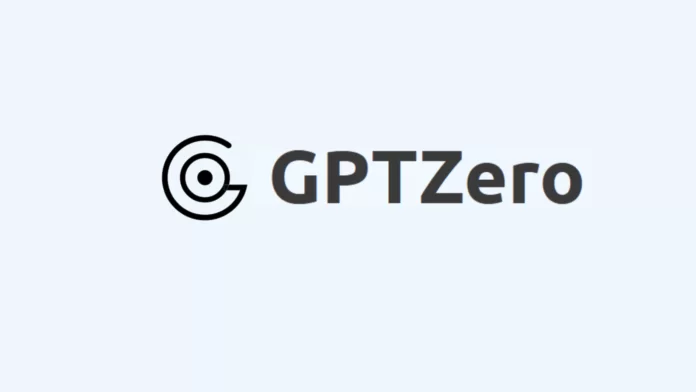GPTZero is a ChatGPT AI Detector Tool. It detects AI-generated text from large language models (LLMs) such as ChatGPT, Gemini, Copilot, and Meta AI.GPT (Generative Pre-trained Transformer). OpenAI developed GPT, a popular class of language models that has revolutionized natural language processing tasks like translation, question answering, and text completion.
GPT models are trained on large text datasets to generate human-like responses to various prompts, making them useful for multiple applications. However, the increasing use of OpenAI’s ChatGPT, Google’s Gemini, Microsoft’s Copilot, and Facebook’s MetaAI, among all sectors raised concerns about the potential misuse of these models for generating fake news, spam, and other undesirable content.
OpenAI has proposed a hypothetical version of their GPT model called GPTzero to address concerns raised about the potential for bias. GPTzero would be a blank slate, free from pre-existing parameters or weights, allowing it to be trained from scratch.
In this article, ilovephd explained how GPTZero AI Detector works and its limitations.
What is GPTZero AI Detector?

GPTZero AI Detector is an AI text analyzer tool developed by Edward Tian, a computer science graduate. He wants to help professors and instructors distinguish plagiarized text from original work. The tool checks perplexity and burstiness in a text to determine whether it is artificially generated or crafted by a human.
GPTZero is a classification model that predicts whether a document was written by a large language model, providing predictions on a sentence, paragraph, and document level. GPTZero AI Detector was trained on a large, diverse corpus of human-written and AI-generated text, with a focus on English prose.
Does GPTZero only detect ChatGPT outputs?
GPTZero works robustly across a range of AI language models, including but not limited to ChatGPT, GPT-3, GPT-2, LLaMA, and AI services based on those models.
How GPTZero Works?
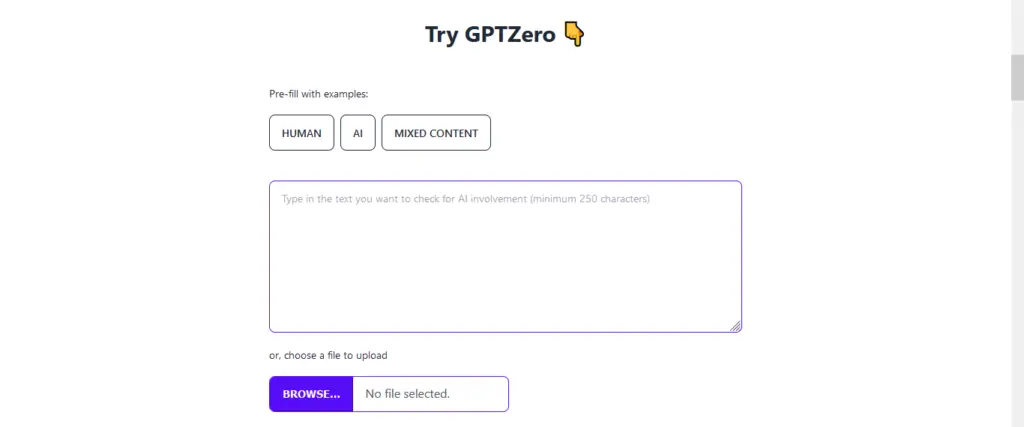
The tool assigns a score to each AI-written document, indicating the likelihood of the entire document. This score helps users decide if a text heavily relies on AI generation.
For documents containing both AI-generated and human-written content, sentence-level classification comes into play. A single flagged AI-written sentence doesn’t guarantee a partially AI-generated document. However, a significant portion identified as AI-generated highlights the relevant section in the text.
Ultimately, the classifier aims to identify situations where further investigation and caution regarding the risks of AI-generated content are necessary.
It can be useful in education, certification, hiring and recruitment, social writing platforms, and situations where plagiarism or disinformation may be a concern.
The Role of GPTzero in Detecting ChatGPT-Generated Research Articles
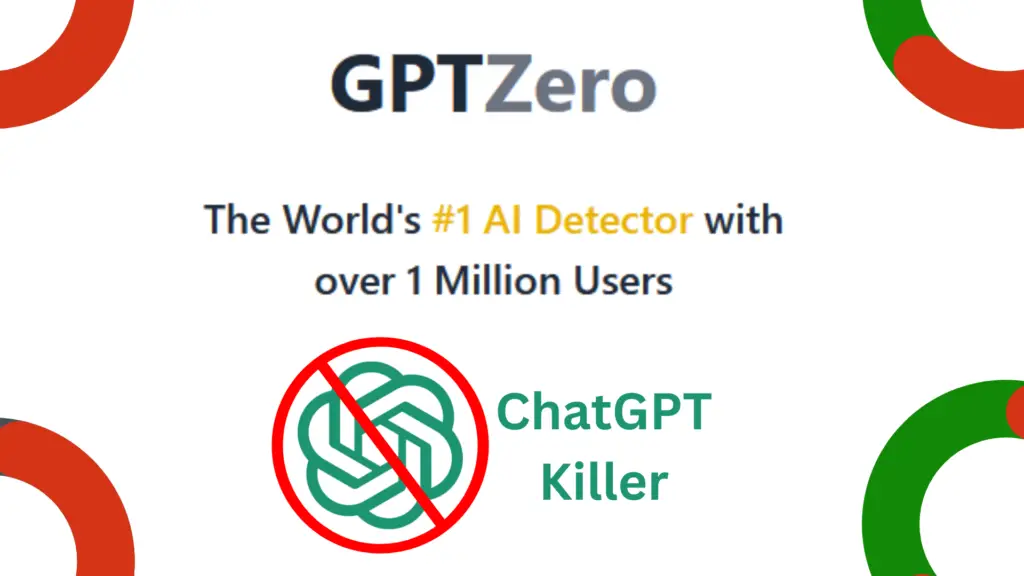
OpenAI developed ChatGPT, a large language model capable of generating coherent and informative research articles on a wide range of topics.
Researchers and academics have raised concerns, however, about plagiarism in some articles generated by ChatGPT.
How does GPTzero AI Detector Work
GPTZero designs itself as an AI detection tool to identify text generated by AI models like ChatGPT, Bing Chat, Meta AI, Gemini, Copilot, and other large language models. It’s a free online tool that helps users determine whether a piece of text is human-written or AI-generated.
GPTzero works by comparing the text generated by ChatGPT with a large dataset of known research articles to identify similarities and overlaps. This is done using a variety of techniques, including text similarity metrics, semantic analysis, and machine learning algorithms.
GPTZero AI Detection Tool Working Procedure in 4 Steps
Step 1: Text Input
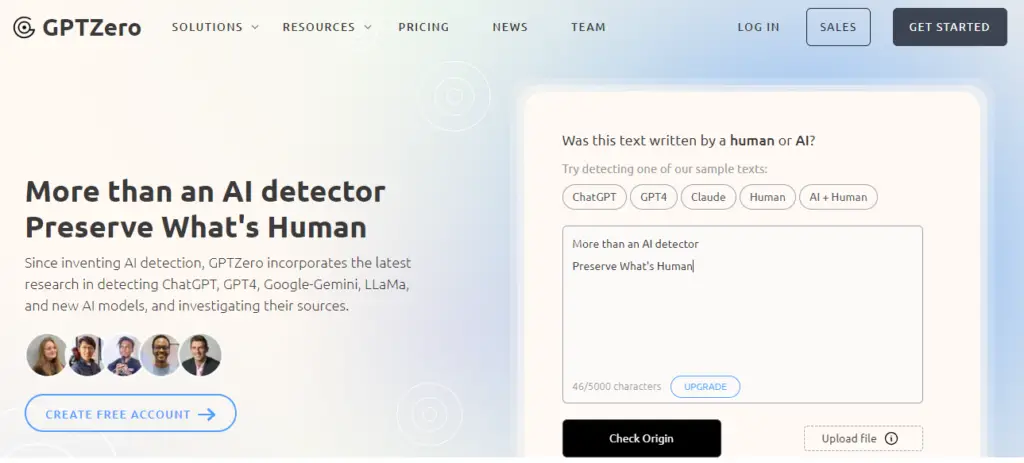
You input the text you want to analyze into the GPTZero website or API.
Step 2 Analysis

GPTZero’s algorithm analyzes the text, looking for patterns and characteristics commonly found in AI-generated text.
Step 3 Scoring
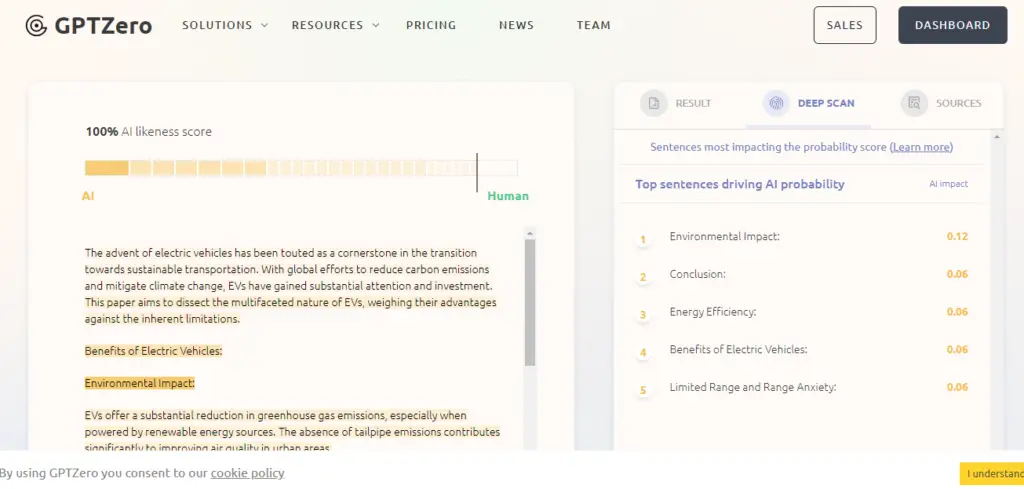
The tool assigns a score based on the likelihood that an AI model generated the text.
Step 4 Result
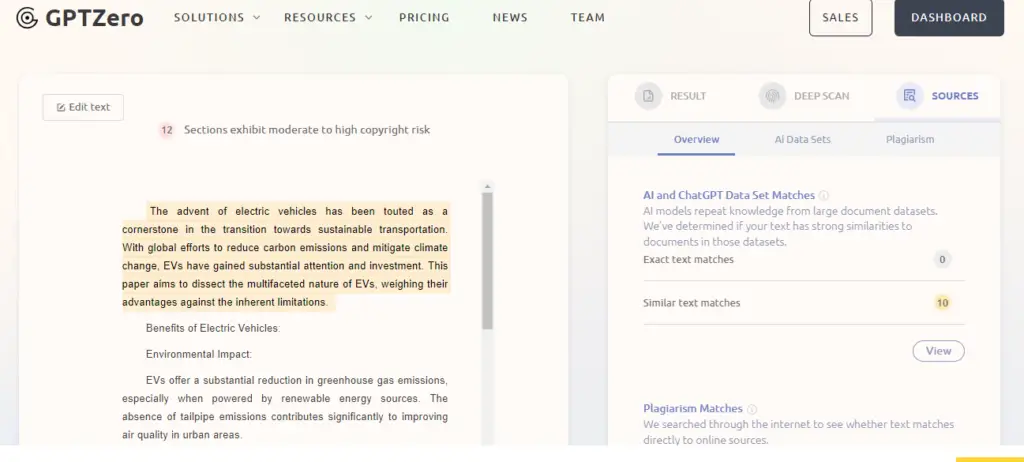
The output shows the score, indicating the probability of AI generation, along with a confidence level.
AI Detection Methodology
GPTZero uses a combination of techniques to detect AI-generated text, including:
- Statistical analysis: Examining sentence structure, word choice, and linguistic patterns.
- Machine learning: Training models to recognize patterns in AI-generated text.
- N-gram analysis: Analyzing sequences of words to identify patterns.
If GPTZero identifies significant similarities between a ChatGPT-generated research article. and a known research article. It flags the article for further review by human moderators. This allows researchers and academics to verify the originality and authenticity of the research article before citing or referencing it.
Limitations of GPTZero AI Detector
While GPTzero is a promising tool for detecting plagiarized content in ChatGPT-generated research articles, it is not perfect. AI researchers constantly evolve AI models to improve detection accuracy, and they can develop new techniques to achieve this. Additionally, GPTZero may incorrectly identify human-written text as AI-generated (false positives) or miss AI-generated text (false negatives).
There are still some limitations to the accuracy of the detection algorithm, particularly when it comes to detecting paraphrasing and rewording of existing content. Additionally, as GPTzero is a relatively new technology, there is still much room for improvement and refinement in the future.
Key Takeaways
- GPTZero: A Detection Tool: GPTZero is a hypothetical version of OpenAI’s GPT model designed to detect AI-generated research articles.
- Zero Pre-Existing Parameters: GPTZero has zero pre-existing parameters or weights, making it a unique tool for detection.
- Detection Capabilities: GPTZero can detect articles generated by ChatGPT, Copilot, Gemini, and Meta AI that contain plagiarized content.
- Limitations: While GPTZero is a valuable tool, its detection algorithm still has some limitations and is not 100% accurate.
- Fight Against Fake News: GPTZero represents an important step forward in the fight against fake news, spam, and other undesirable content. AI language models typically generate these contests.
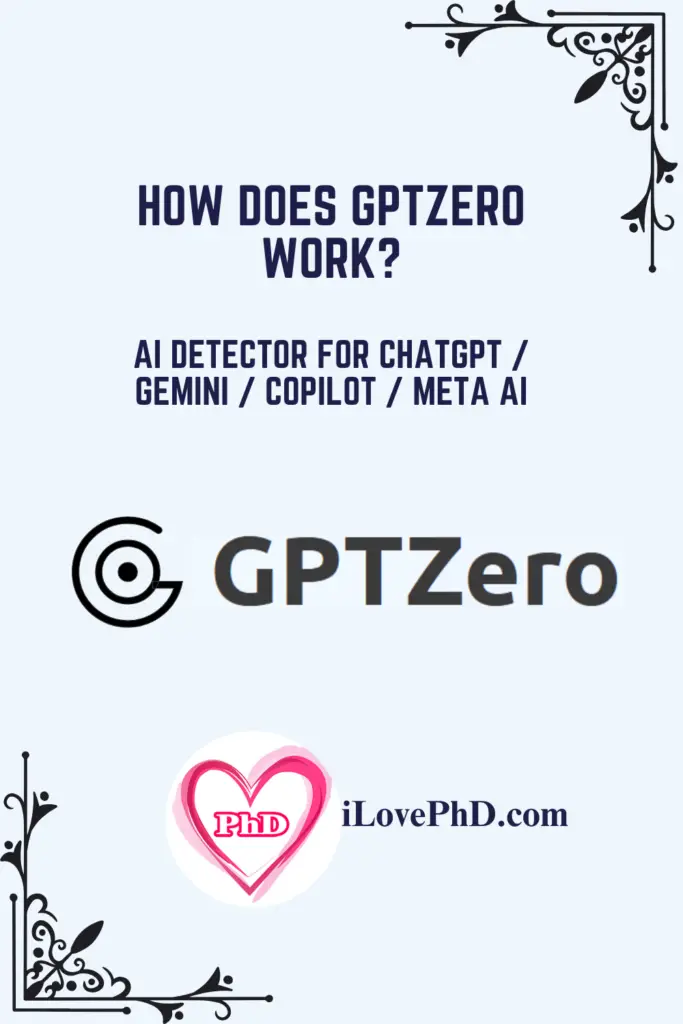
Also Read: How to Use ChatGpt to Write a Scientific Research Paper?
Effectively Use Meta AI for PhD Research?
